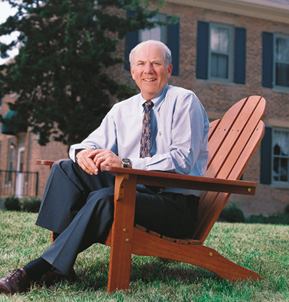In-House Expertise One of the reasons that NCR has been so successful – with 15,000 units in 26 states and Puerto Rico – is because of its strategic planning process. The company has developed in-house expertise, which can amass capital to build, renovate and preserve affordable housing. The company has developed a proven track record with federal, state and local housing authorities across the country.
NCR has spent the last year developing its property management system, financial statements, reporting mechanisms and all asset management components, and hiring key employees that have large-scale asset experience. With these additions, there is more confidence from the investors and the lending community to invest in and lend to NCR, says Slemmer.
And, now that the systems and people are in place, the company has been charged to aggressively grow its family housing side of the business by building 10 communities per year and acquiring another 10 properties per year. “We’ve made a big investment in changing the infrastructure so we can deal with the growth,” says Slemmer. “I would say if we’re successful at that, you will see the board push us further to provide more housing per year.”
He believes that the company competes with most companies now. However, “we want to be the top,” he says. “We think the reorganization is going to open up doors for us. When somebody looks at NCR,
I want him or her to be able to say not only did we do innovative, creative financing that creates community supported affordable housing, but we are the best at property management as well.”
Minister’s Mortgage Started NCR NCR National Church Residences (NCR) was formed in 1961 out of the Rev. John R. Glenn’s concern for the forgotten elderly, explains Thomas W. Slemmer, president and CEO. Glenn was reading an article in the Colum-bus Dispatch that 323 homes in southern Ohio were going to be auctioned off to the highest bidder, and he thought it would make an ideal setting for senior housing.
The homes were unused workforce housing for employees of an atomic energy refining plant being built 10 miles away, recalls Slemmer. The U.S. Department of Housing and Urban Development and the Federal Housing Administration (FHA) had insured loans on these houses that went into default and the FHA was selling them off.
Glenn organized four Presbyterian churches in the area, which formed a nonprofit organization to put a bid on the property. The organization needed $50,000 to put a deposit down to secure its bid, but it only had $25,000, explains Slemmer. So, Glenn mortgaged his house to come up with the rest of the down payment.
The property became known as Bristol Village in Waverly, Ohio, and is fully accredited by the Continuing Care Accreditation Commission as a continuing care retirement community.
Over the years, Bristol Village has grown to meet a full range of lifestyle needs, including independent living in more than 400 individual homes, supportive services in an 82-unit apartment complex, a 25-unit assisted living facility and skilled nursing care in a 50-unit convalescent center. In 2001, Bristol Gardens, a 12-unit Alzheimer’s care retreat, was added to the campus.
